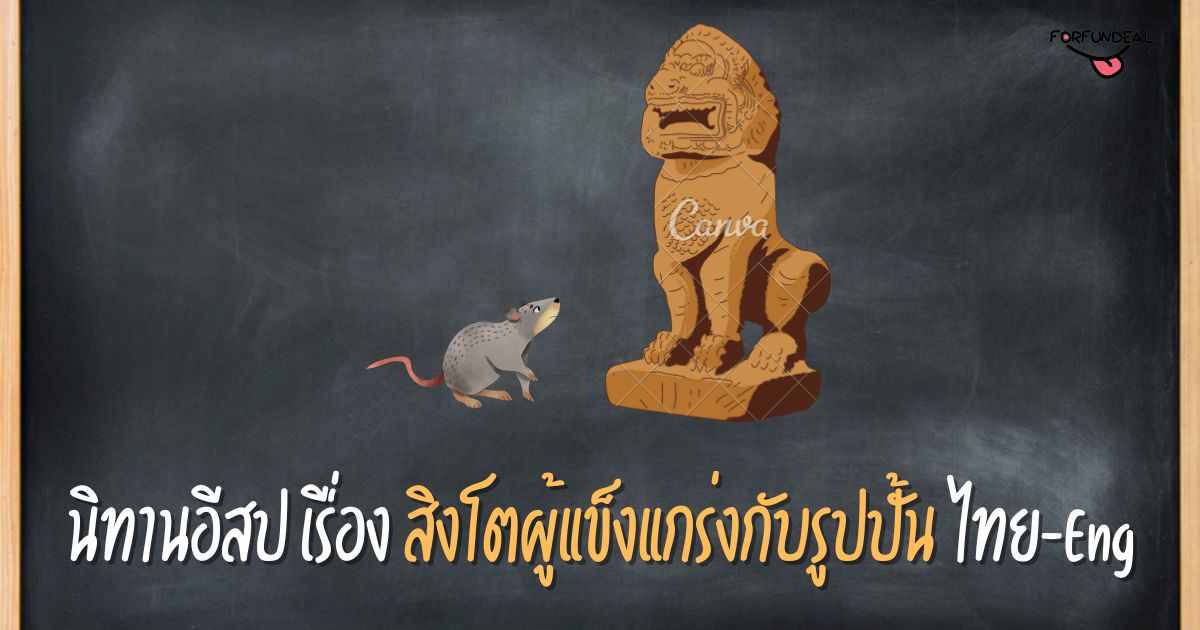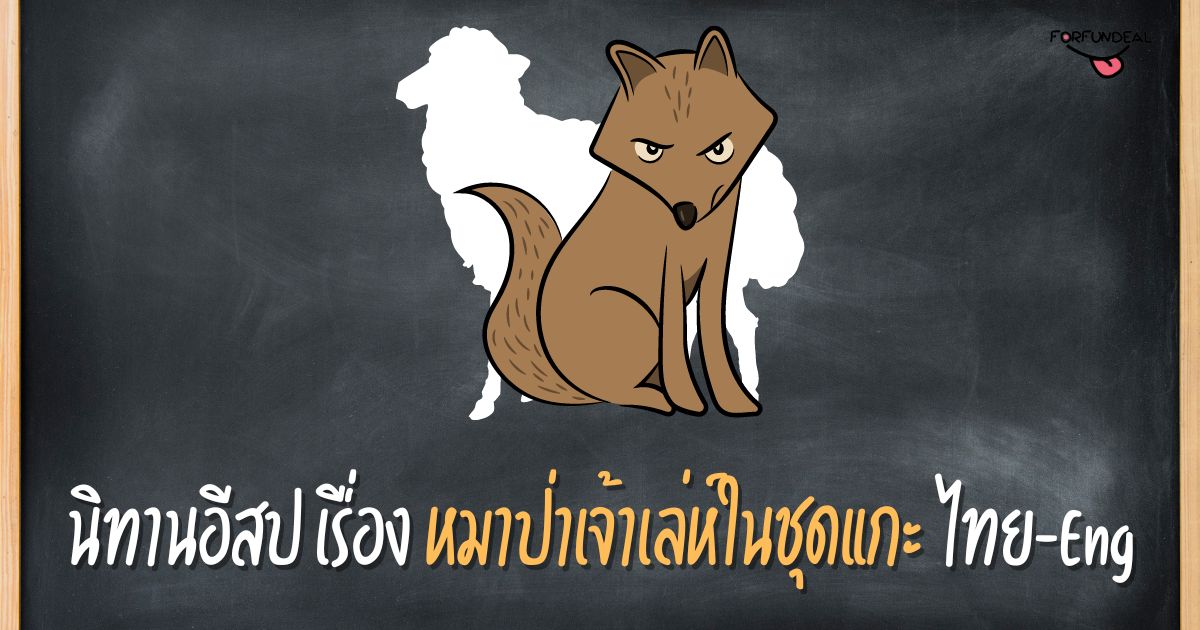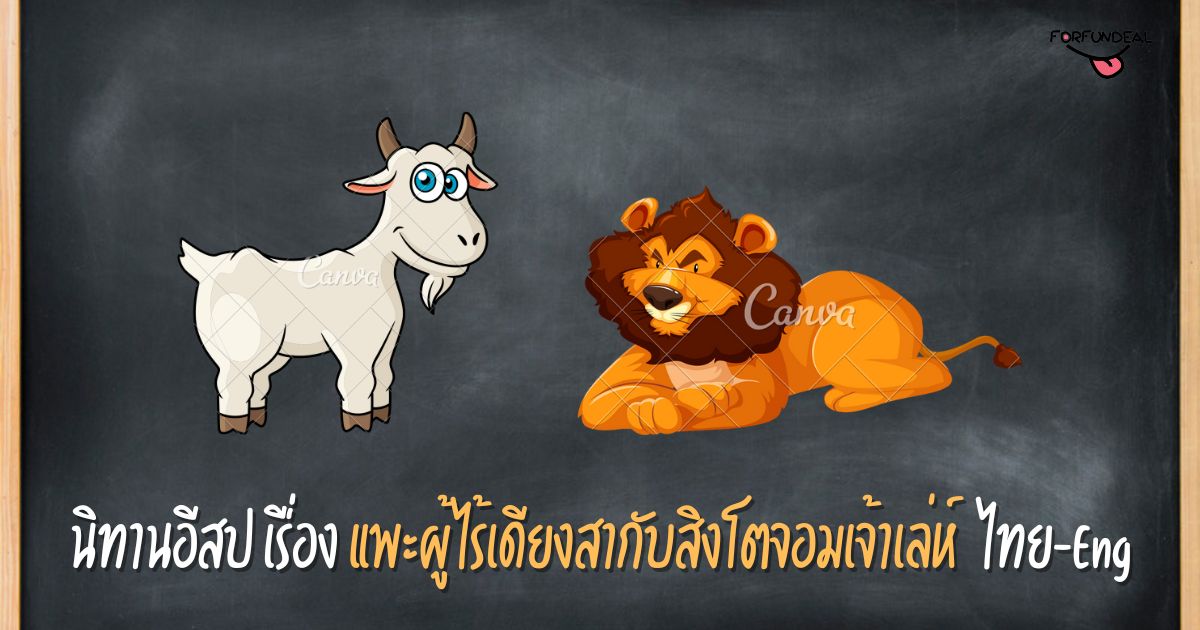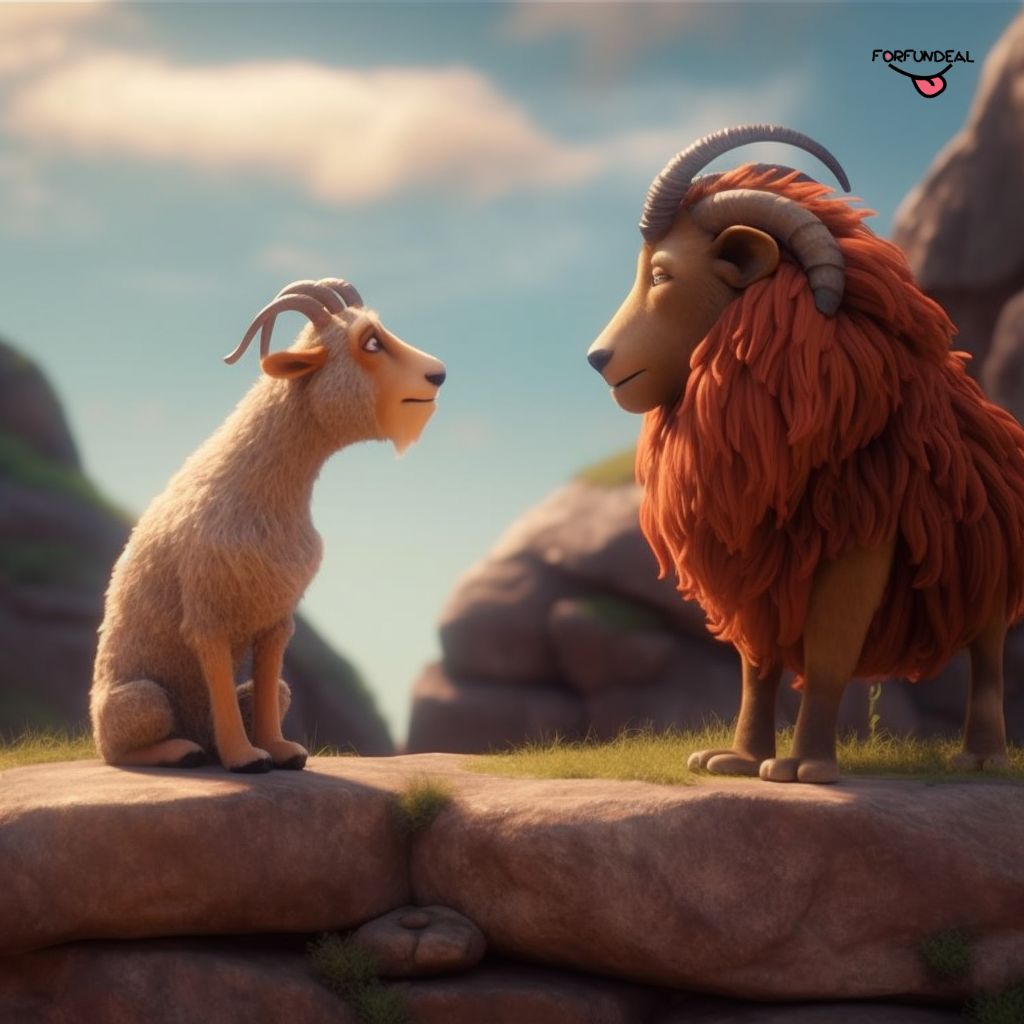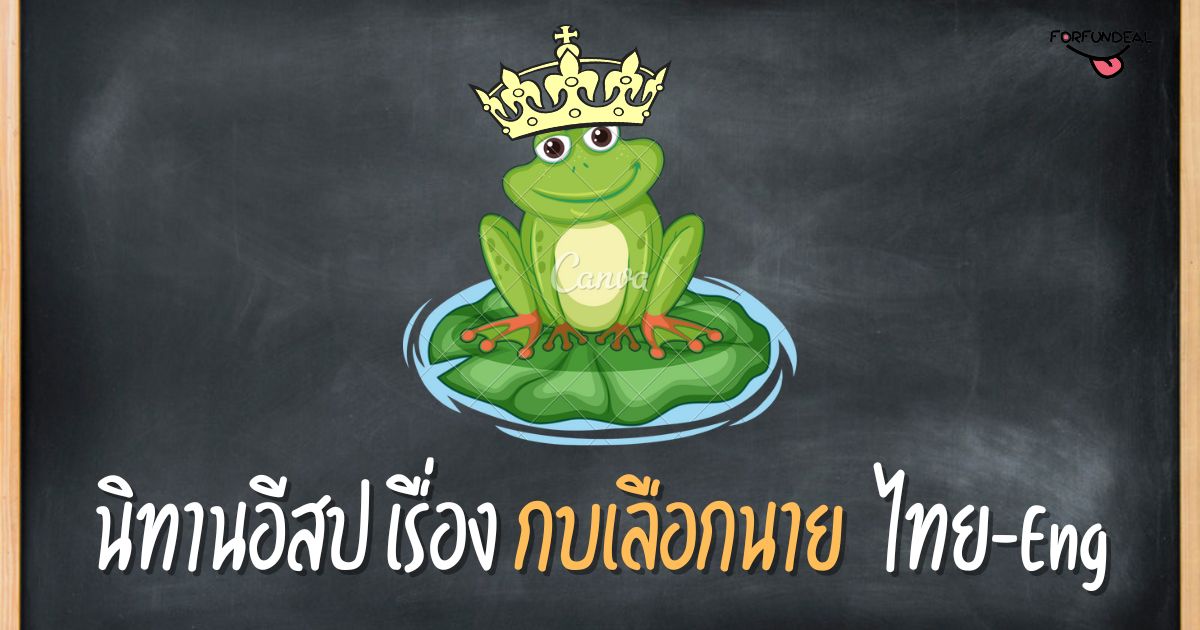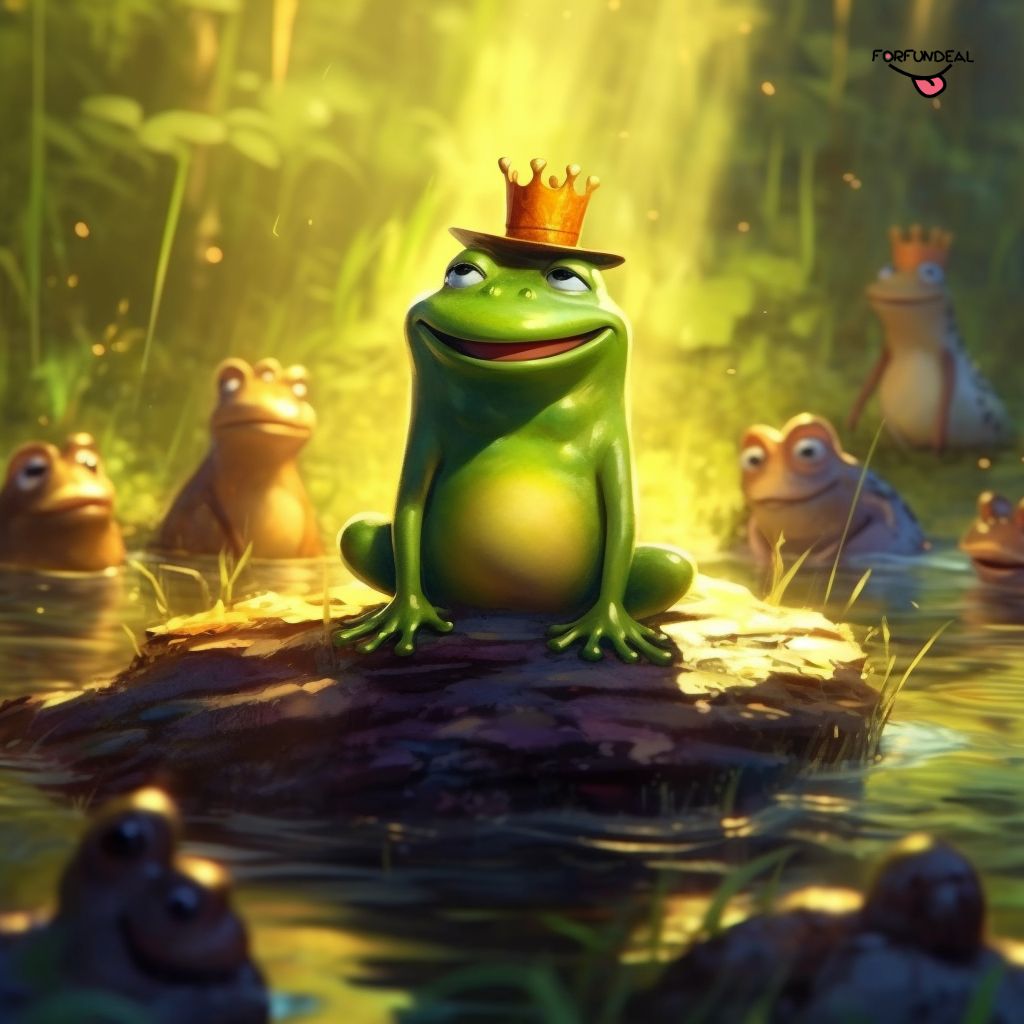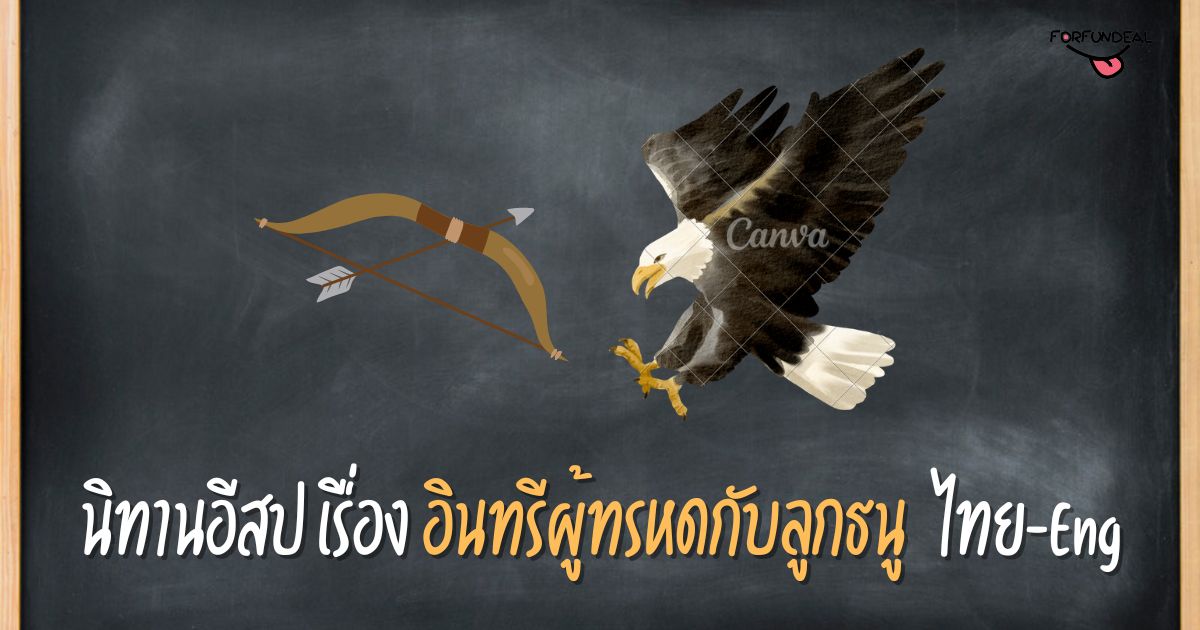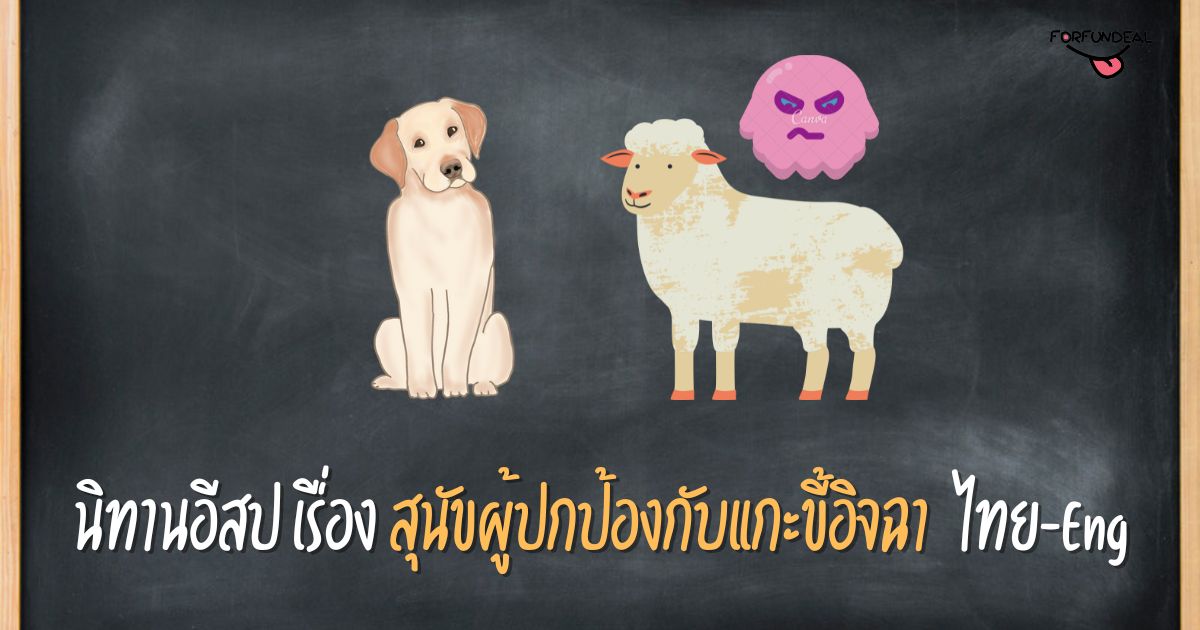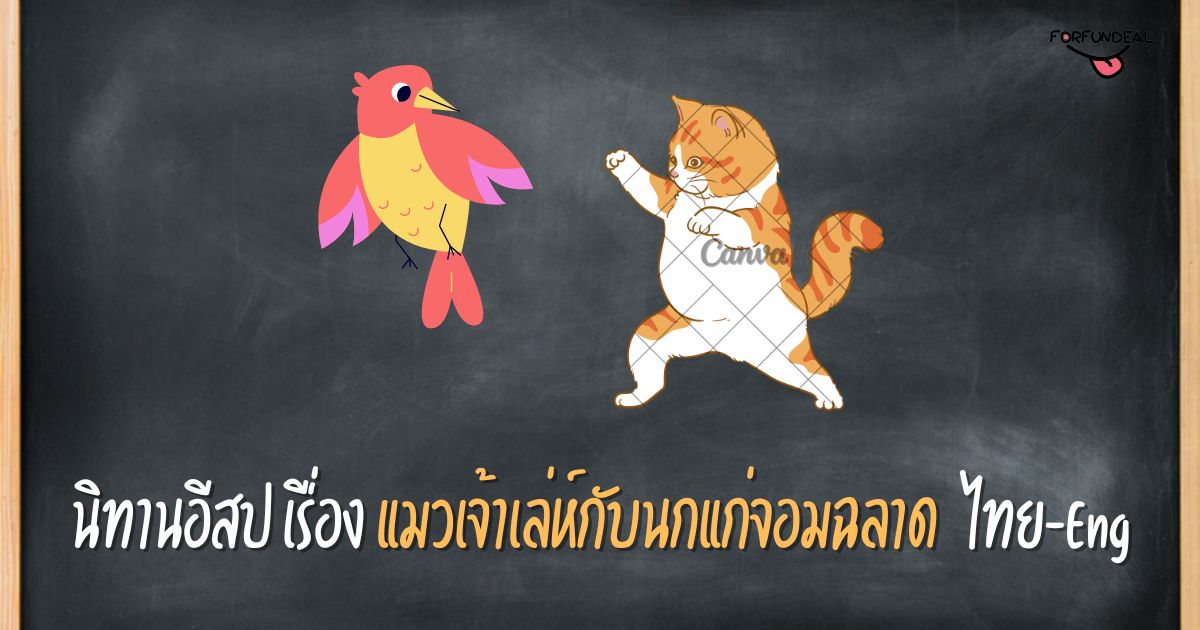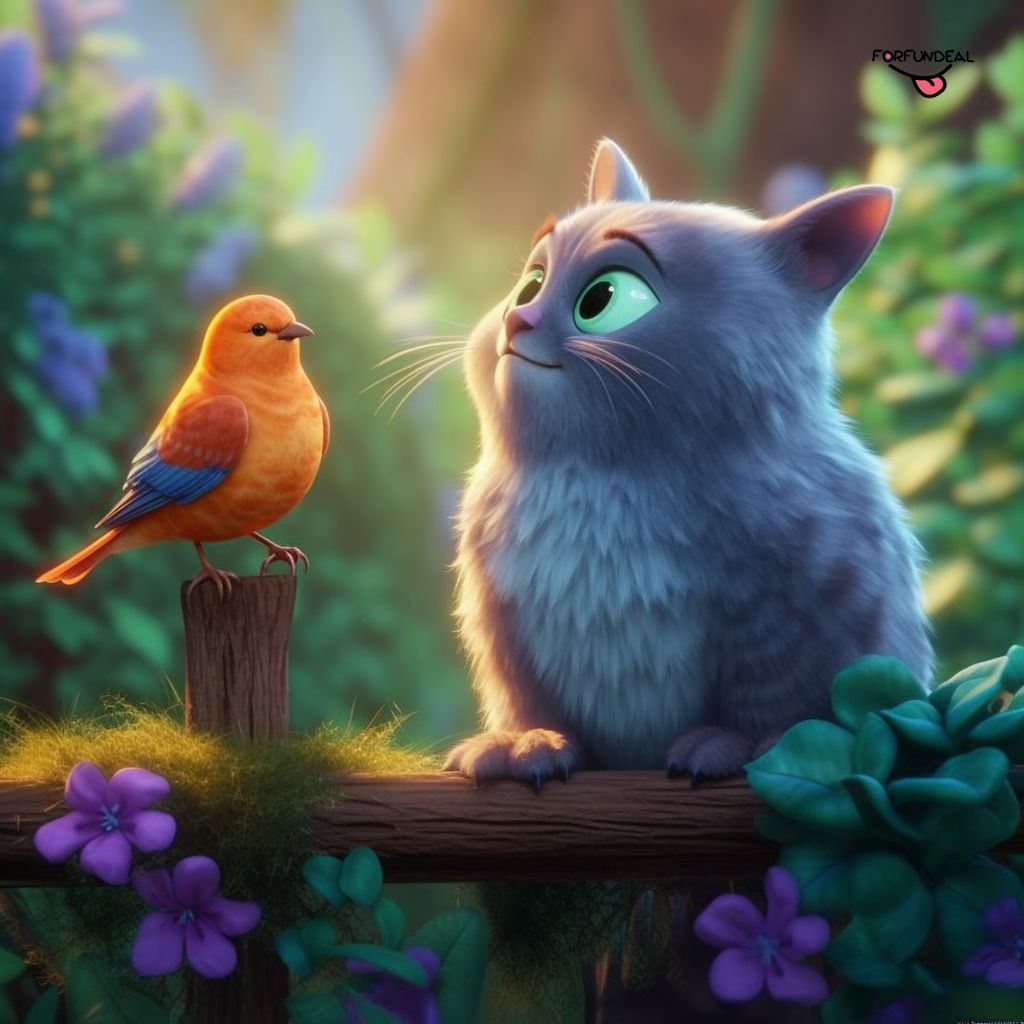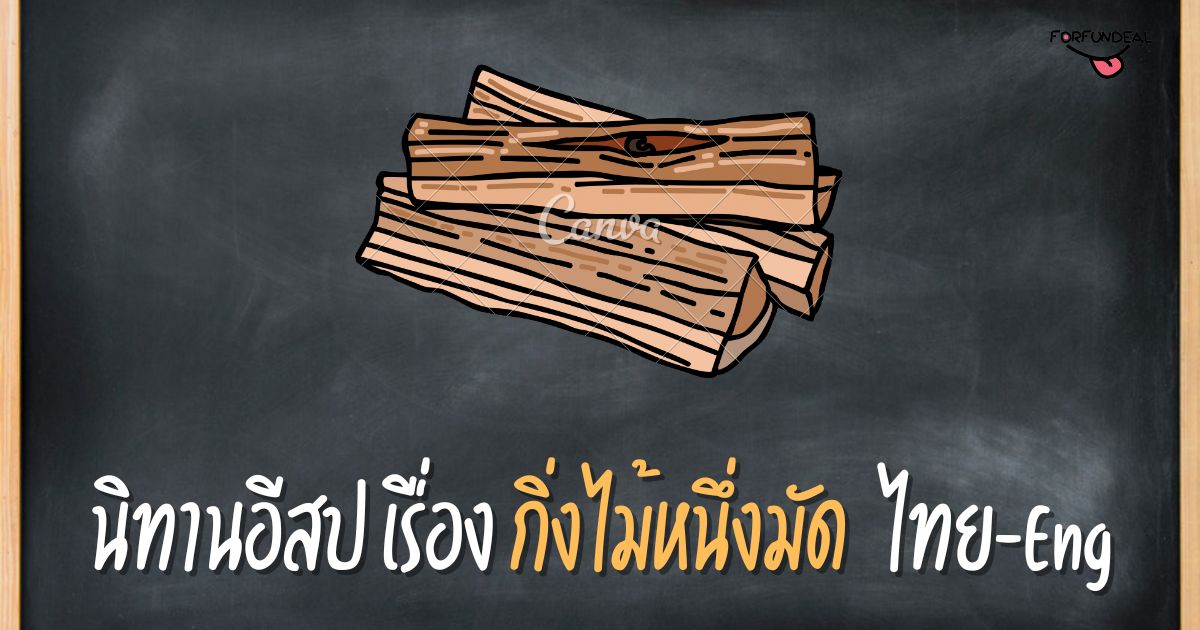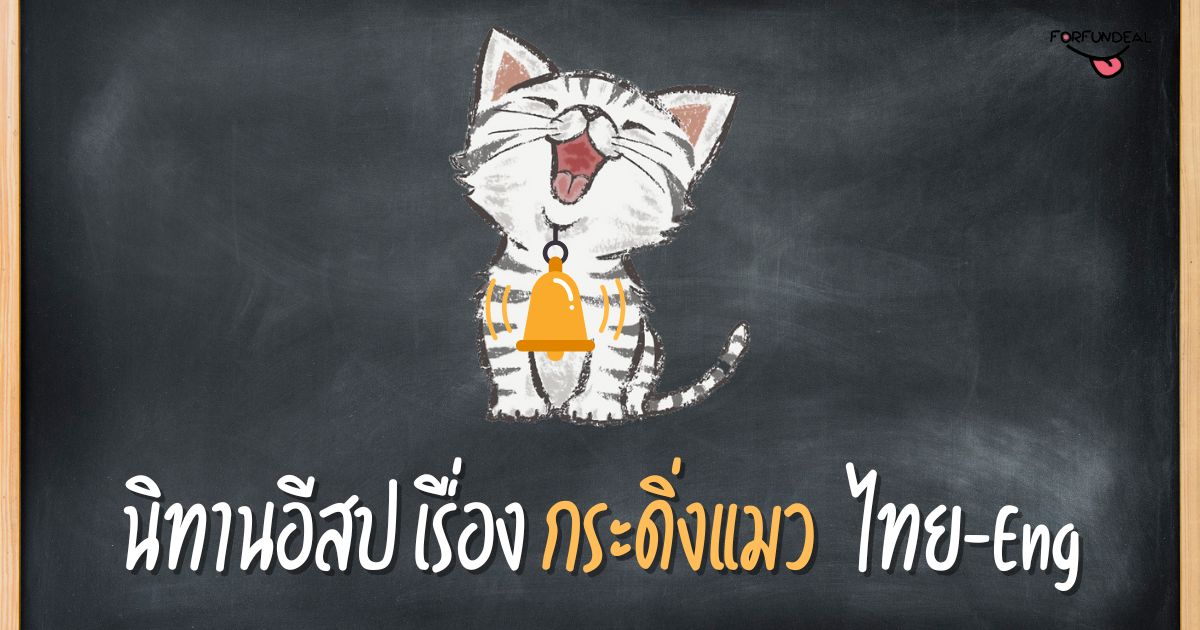“สิงโตผู้แข็งแกร่งกับรูปปั้น” เป็นนิทานอีสปที่สอนเราเกี่ยวกับความเข้มแข็ง ความแข็งแกร่งที่แท้จริง ว่ามันไม่ได้มาจากภายนอกแม้แต่น้อย แต่มันอยู่ภายในจิตใจที่เข้มแข็งของเรา
นิทานอีสปเรื่องสิงโตผู้แข็งแกร่งกับรูปปั้น
กาลครั้งหนึ่งนานมาแล้ว ในป่าทึบมีรูปปั้นสิงโตที่งดงามยืนอยู่ รูปปั้นนี้ประดิษฐ์ขึ้นอย่างดีและเหมือนจริงมาก จนใครก็ตามที่เห็นมันจากระยะไกลดูเหมือนเป็นสิงโตจริงๆ สัตว์ที่ผ่านไปมาจะตกใจกลัวและวิ่งหนีทันที โดยเชื่อว่าเป็นสัตว์นักล่าที่ทรงพลังและอันตราย
Once upon a time, In a dense forest, there stood a magnificent statue of a lion. The statue was so well-crafted and lifelike that it appeared to be a real lion to anyone who saw it from a distance. Animals passing by would be struck with fear and immediately run away, believing it to be a powerful and dangerous predator.
วันหนึ่ง หนูน้อยขี้สงสัย และกล้าหาญได้เข้าไปใกล้รูปปั้น เมื่อมันเข้ามาใกล้ หนูก็สังเกตเห็นว่า “สิงโต” ยังคงนิ่งและไม่ตอบสนอง เมื่อตระหนักว่ามันเป็นเพียงรูปปั้นที่ไร้ชีวิต หนูจึงเอาชนะความกลัวของมันและปีนขึ้นไปบนมันอย่างกล้าหาญ
One day, a curious and brave little mouse ventured near the statue. As it approached, the mouse noticed that the “lion” remained motionless and did not respond. Realizing that it was just a lifeless statue, the mouse overcame its fear and boldly climbed upon it.
ขณะที่หนูกำลังเฉลิมฉลองชัยชนะเหนือความกลัว สิงโตตัวจริงก็ปรากฏตัวขึ้น มันเฝ้าสังเกตการกระทำของหนูจากระยะไกล สิงโตเข้าหาหนู รับรู้ถึงความกล้าหาญของมัน และพูดว่า “เจ้าหนู เจ้าอาจจะกล้าหาญ แต่จำไว้ว่า รูปลักษณ์ภายนอกไม่ได้ทำให้คนมีพลังอย่างแท้จริง ความแข็งแกร่งที่แท้จริงอยู่ภายใน”
Just as the mouse was celebrating its triumph over fear, the real lion appeared. It had been observing the mouse’s actions from a distance. The lion approached the mouse, acknowledging its courage, and said, “You may have been brave, little mouse, but remember that it is not the appearance that makes one truly powerful. True strength lies within.”

นิทานเรื่องนี้สอนให้รู้ว่า
“ความแข็งแกร่งที่แท้จริงไม่ได้ถูกกำหนดโดยรูปลักษณ์ภายนอก แต่ถูกกำหนดโดยการกระทำและอุปนิสัยของคนๆ หนึ่ง”
- รูปร่างหน้าตาสามารถหลอกลวงได้ ลักษณะเหมือนจริงของรูปปั้นหลอกสัตว์หลายชนิดให้เชื่อว่าเป็นสิงโตจริงๆ มันเตือนเราว่าอย่าตัดสินเพียงรูปลักษณ์ภายนอก แต่ให้มองลึกลงไปเพื่อค้นหาความจริง
- ความแข็งแกร่งที่แท้จริงมาจากภายใน ข้อความที่สิงโตส่งถึงหนูเน้นย้ำว่าพลังและความแข็งแกร่งที่แท้จริงไม่ได้ถูกกำหนดโดยรูปลักษณ์ภายนอก แต่พิจารณาจากคุณสมบัติภายใน เช่น ความกล้าหาญ สติปัญญา และอุปนิสัย
- การเอาชนะความกลัวนำไปสู่การเติบโต ความสามารถของหนูในการเอาชนะความกลัวและปีนขึ้นไปบนรูปปั้นแสดงถึงแนวคิดที่ว่าการเผชิญหน้ากับความกลัวของเราสามารถนำไปสู่การเติบโตส่วนบุคคล และการตระหนักว่าความกลัวของเรานั้นไม่มีมูลความจริง
- ความมั่นใจในตนเองเป็นสิ่งสำคัญ เรื่องราวเน้นย้ำถึงความสำคัญของความมั่นใจในตนเองและการเชื่อมั่นในตนเอง ความลังเลในตอนแรกของเมาส์และความกล้าที่ตามมาแสดงให้เห็นถึงพลังของความมั่นใจในตนเองในการนำทางความท้าทาย
“True strength is not defined by appearances but by one’s actions and character.”
- Appearance can be deceiving: The statue’s lifelike appearance fooled many animals into believing it was a real lion. It reminds us not to judge based solely on outward appearances but to look deeper to discover the truth.
- True strength comes from within: The lion’s message to the mouse emphasizes that true power and strength are not determined by physical appearance but by inner qualities such as courage, wisdom, and character.
- Overcoming fear leads to growth: The mouse’s ability to overcome its fear and climb upon the statue represents the idea that facing our fears can lead to personal growth and the realization that our fears may be unfounded.
- Self-confidence is important: The story highlights the significance of self-confidence and believing in oneself. The mouse’s initial hesitation and subsequent boldness demonstrate the power of self-assurance in navigating challenges.
เตือนเราว่าความแข็งแกร่งและพลังที่แท้จริงไม่ได้ถูกกำหนดโดยรูปร่างหน้าตา แต่กำหนดโดยคุณสมบัติภายในและคุณธรรมที่เรามี ส่งเสริมเราให้มองข้ามการตัดสินที่ผิวเผินและปลูกฝังคุณสมบัติต่างๆ เช่น ความกล้าหาญ สติปัญญา และความมั่นใจในตนเอง การทำเช่นนั้น เราสามารถเอาชนะความกลัว พัฒนาตนเอง และใช้ประโยชน์จากศักยภาพที่แท้จริงของเรา

